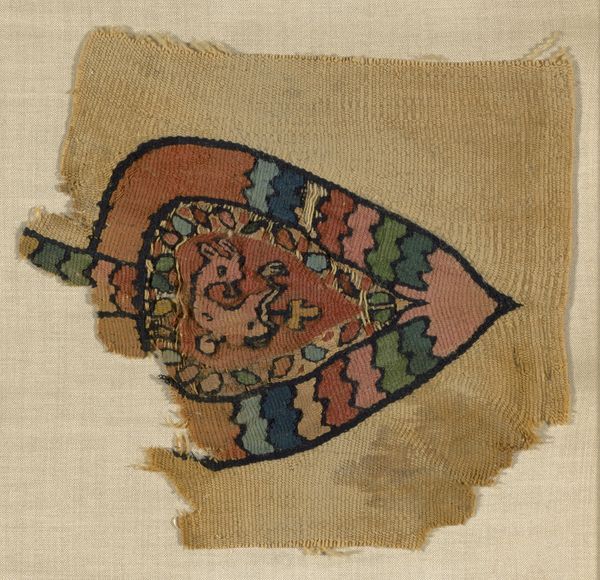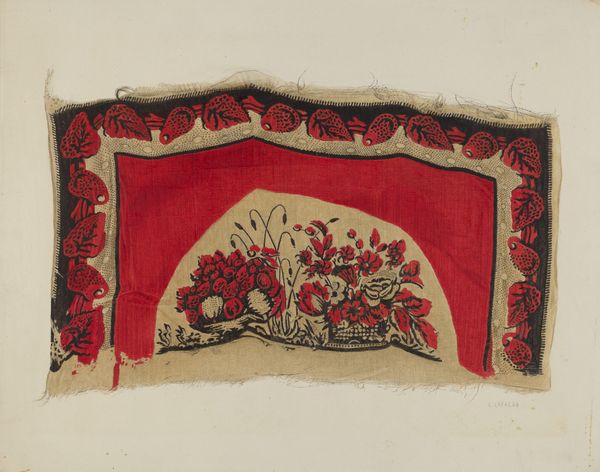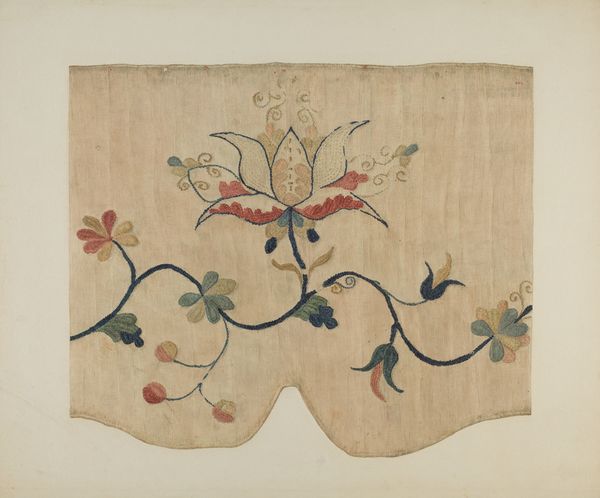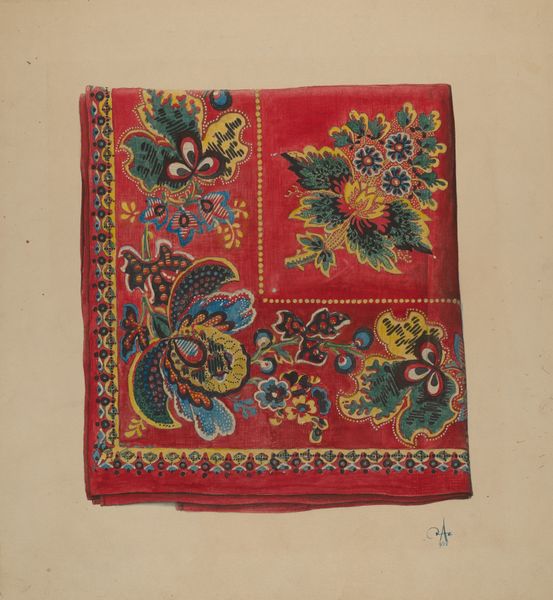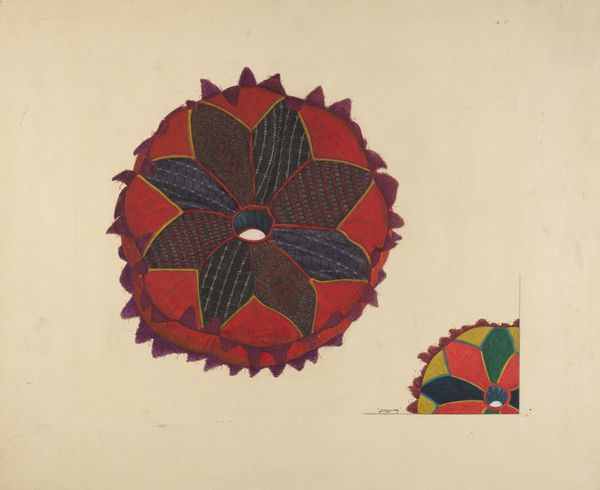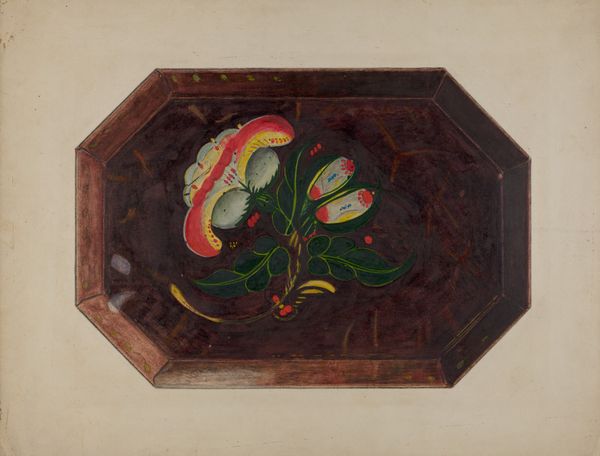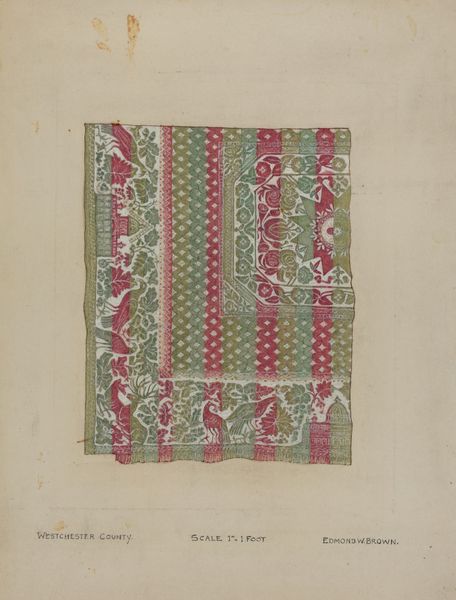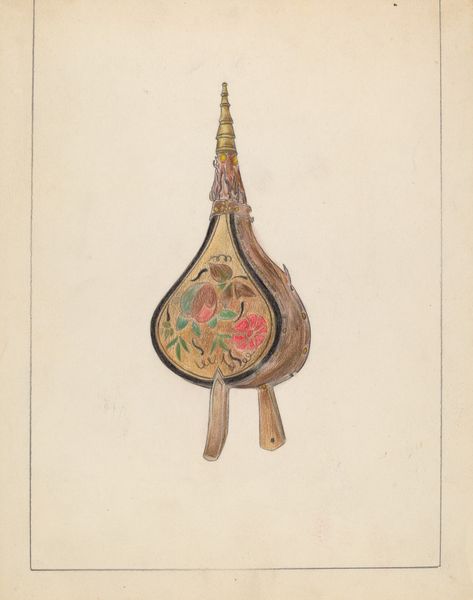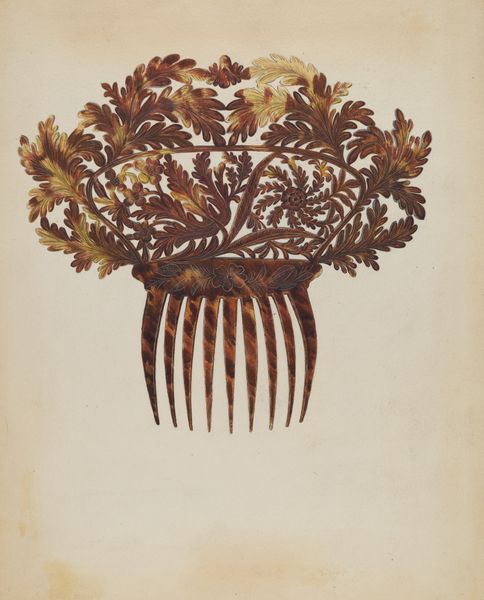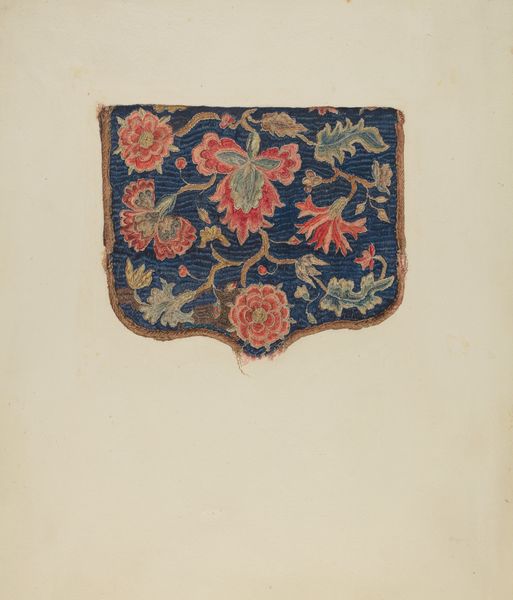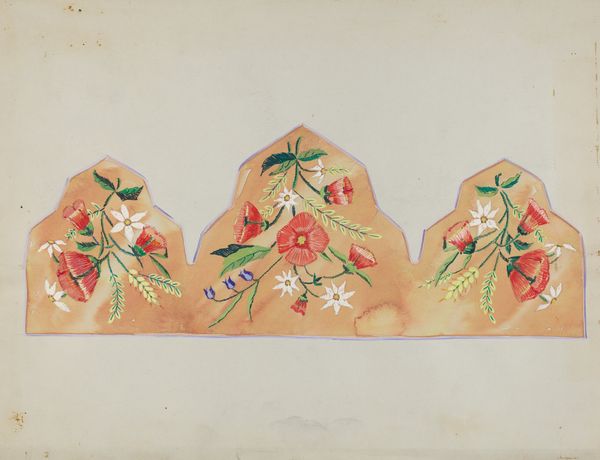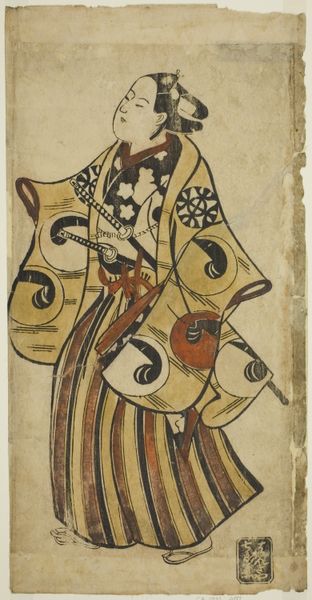
drawing, ceramic, watercolor
#
drawing
#
decorative element
#
ceramic
#
watercolor
#
ceramic
#
watercolour illustration
#
decorative-art
#
decorative art
Dimensions: overall: 37.7 x 29.2 cm (14 13/16 x 11 1/2 in.) Original IAD Object: 6 1/16" in diameter; 8 1/2" high
Copyright: National Gallery of Art: CC0 1.0
Curator: Here we have Charles Henning’s "Toleware Coffee Pot", likely made around 1940. It's a watercolour and drawing piece portraying decorative art, specifically an illustration reminiscent of painted ceramic. What's your first impression? Editor: Well, right away, that vibrant red really pops. It's almost…aggressively cheerful. It makes me think of folk art, but with a slightly unsettling intensity. Curator: It certainly does possess a certain boldness. The form of the depicted object, this toleware coffee pot shape, speaks to a broader tradition of decorative painting in both Europe and America. Think Pennsylvania Dutch crafts, for example. Editor: Absolutely, I see those roots, but the flowers… they aren’t quite right, are they? Almost cartoonish in their arrangement. And the way the artist renders the paint—the speckling—it doesn’t quite mimic real toleware perfectly, does it? Curator: That's astute. The "imperfections" and intentional flattening could signal something more profound. The work flirts with representation but isn't slavishly devoted to it. We might read this as commentary on the role of ornamentation itself—the way we yearn for beauty and order, even when they're slightly out of reach. Editor: I love that. It's like the coffee pot is a symbol for our desire for warmth and comfort, maybe even during difficult times, considering the period this piece was likely created in. There is something nostalgic about it too; not about the grand and rich but simple and colourful life. Curator: Exactly! The toleware tradition was all about bringing art into everyday life, making functional objects beautiful. But Henning's rendition isn’t just a celebration; it prompts us to reflect on the artistry embedded in these forms. Perhaps he's pointing out the value of those handmade, lovingly decorated objects during a time of increasing industrialization. Editor: So, beyond the visual delight, there is some kind of visual activist attitude as well, which I respect. The more I look, the more the initial intensity feels like a quiet but powerful statement. Thank you for guiding me on this piece; now it will stick in my mind much longer than before. Curator: The joy is all mine. It has been lovely discussing this with you!
Comments
No comments
Be the first to comment and join the conversation on the ultimate creative platform.
